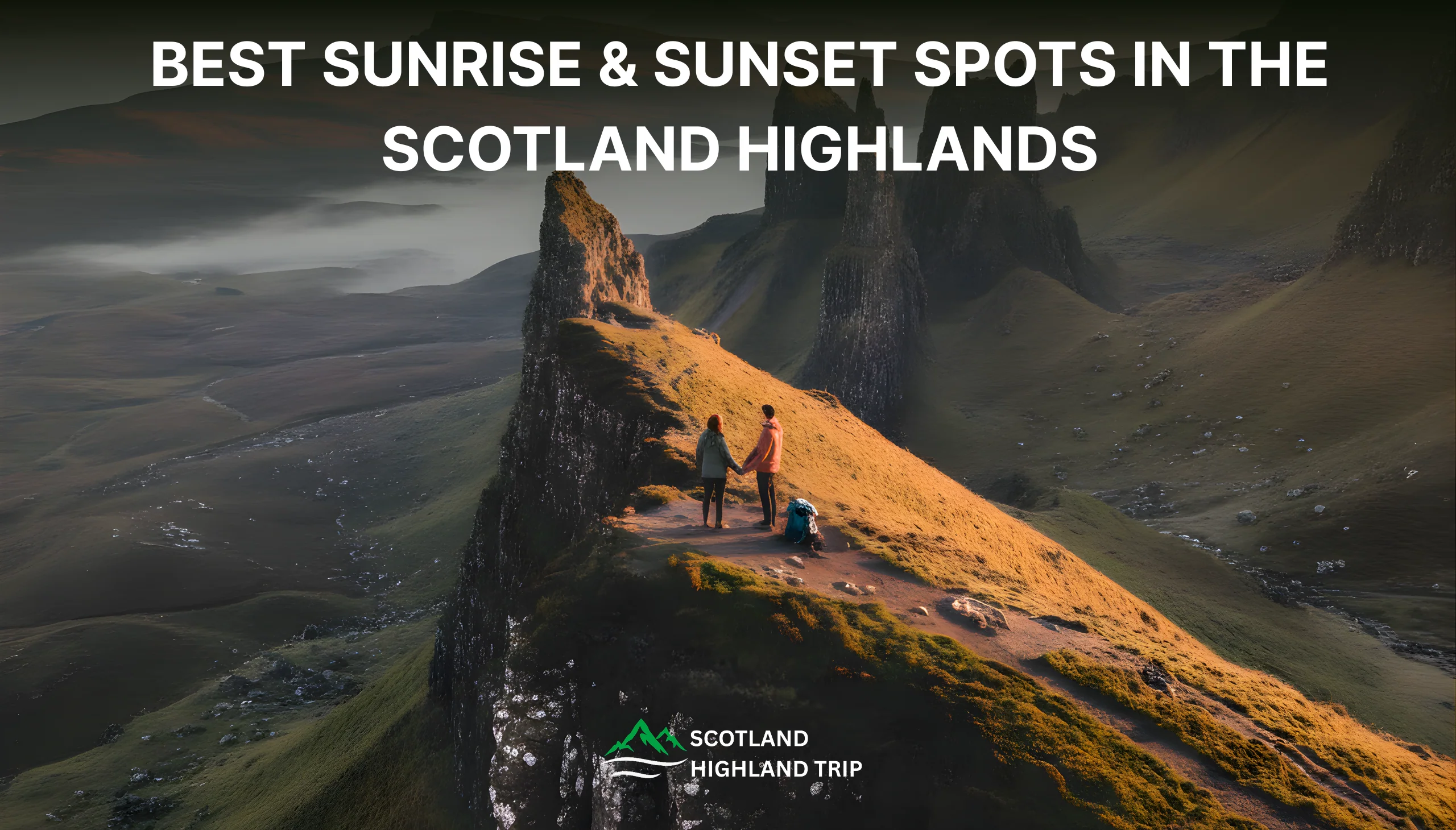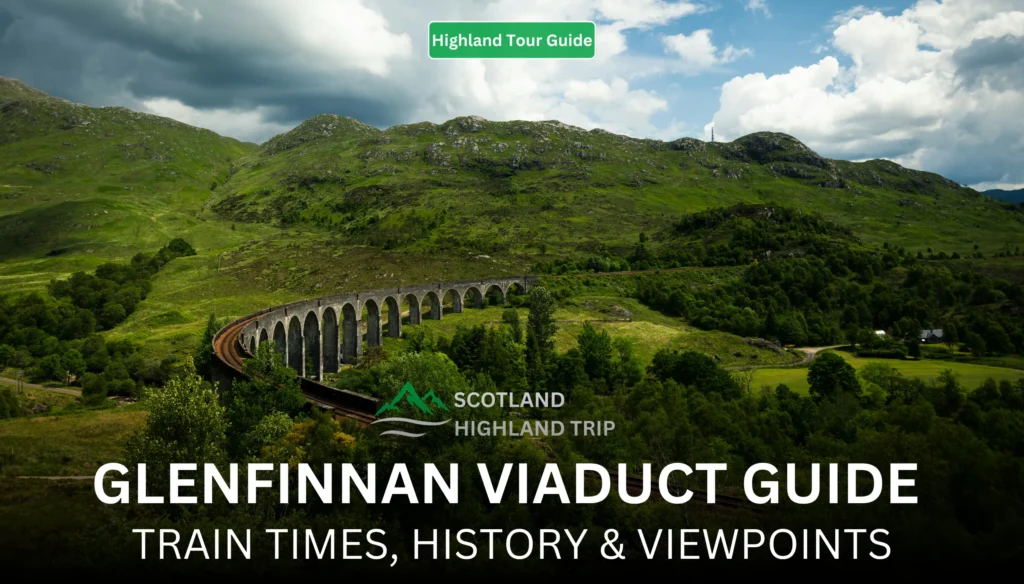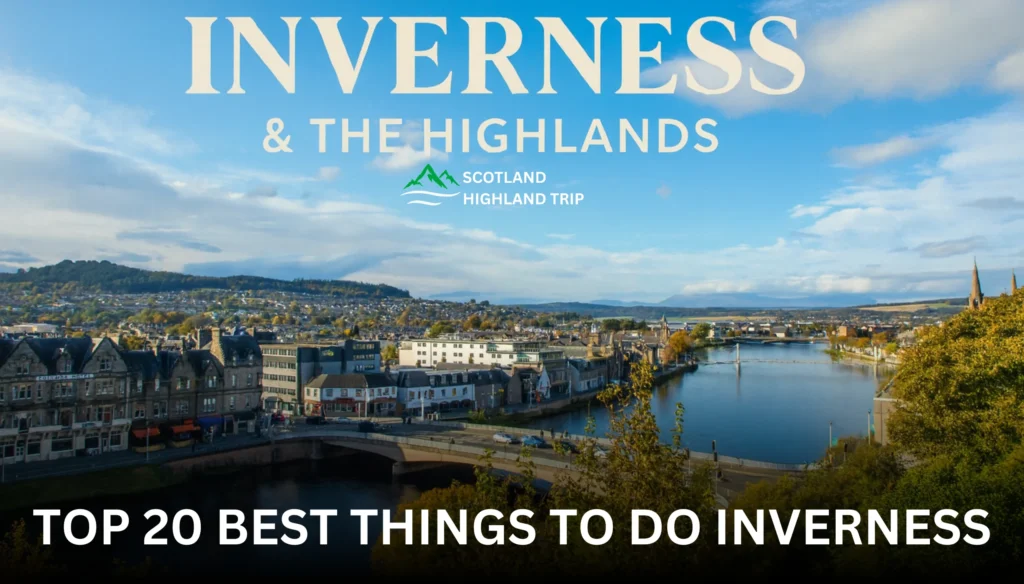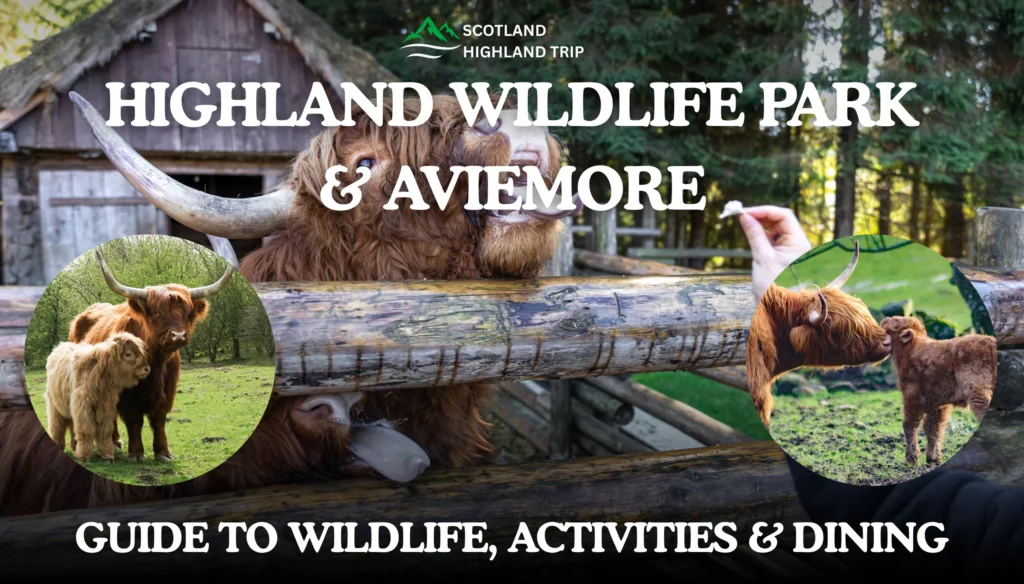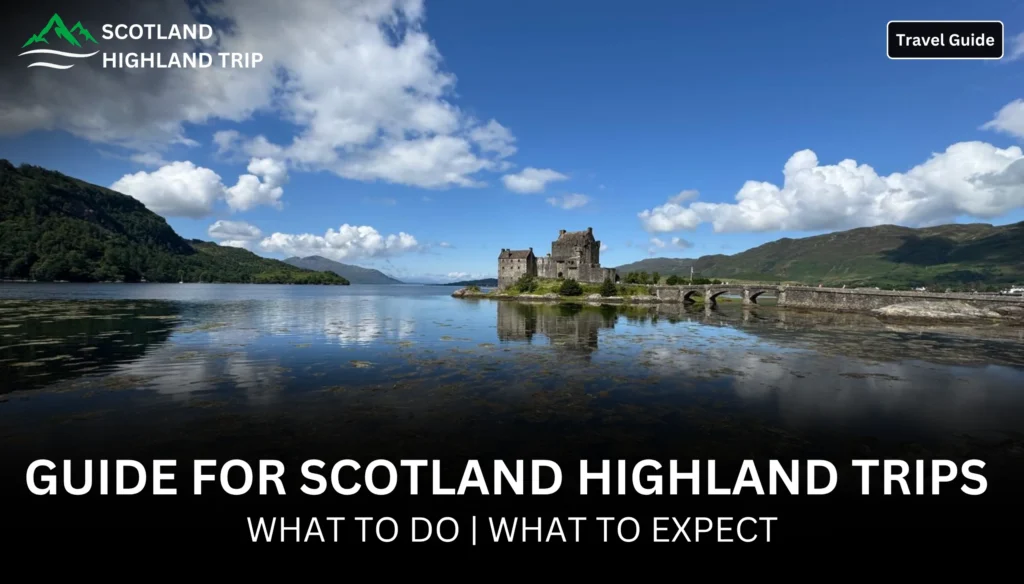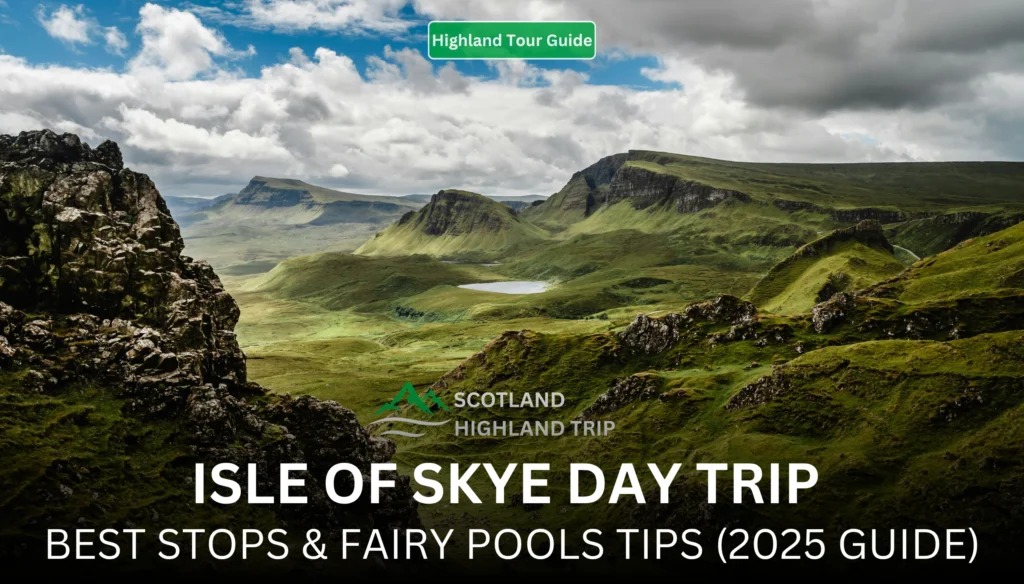Few travel experiences stay with us as long as watching the sun rise or set. Research suggests that fleeting natural events like sunrise and sunset can make landscapes feel more beautiful and trigger feelings of awe that enhance mood and wellbeing. Participants in a University of Exeter study were even willing to pay a premium to experience natural settings at sunrise, and the researchers argued that encouraging people to witness these moments can boost.
When you pair those benefits with the rugged peaks and reflective lochs of the Scottish Highlands, you get pure magic. Our team has explored these landscapes many times, rising in the dark to climb hills and lingering by lochs until the last light faded. This guide combines personal observations with up‑to‑date research and local knowledge from Scotland’s leading travel sources. Whether you’re dreaming about popping the question as the sky glows pink or simply want a moment of calm, you will find the perfect location here.
This article goes well beyond typical listicles. We have analysed top‑ranking pages, extended the word count, and added insider tips, seasonal advice, FAQs and personal reflections. The goal is to make this the most comprehensive sunrise and sunset spots guide to the Highlands, with practical advice for planning your own dawn or dusk adventure.
Jump to Section
Why the Scottish Highlands are Perfect for Sunrises and Sunsets
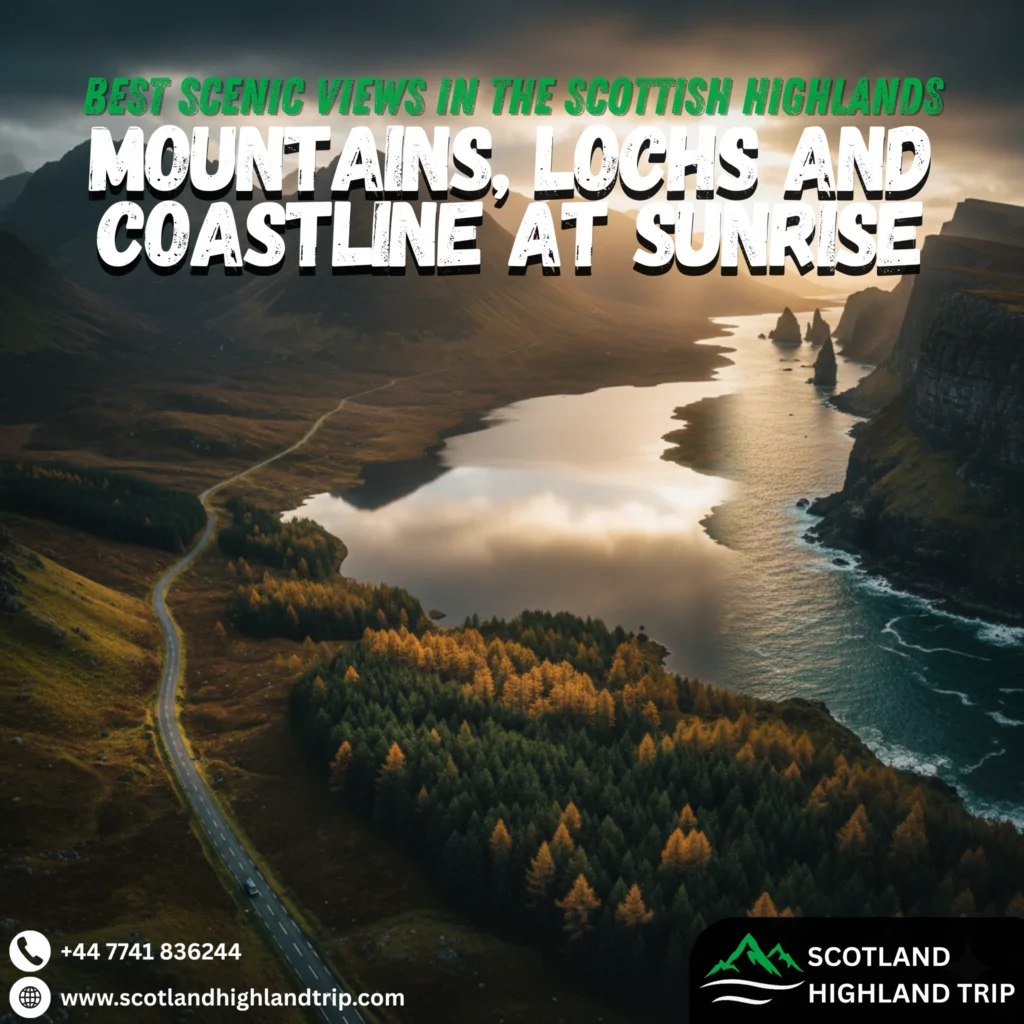
Mountains, water and wide open skies
The Highlands offer an unbeatable combination of dramatic mountains, sea cliffs and mirror‑like lochs. Regions like Assynt in the far north are described as otherworldly, with rugged coastline and iconic mountains such as Suilven. The Torridon Hills are known for their dramatic and desolate peaks, cliffs and forests. The Cairngorms National Park, twice the size of England’s Lake District, contains mountains, forests, rivers and wildlife hotspots, while coastal areas like South Uist and Isle of Lewis offer long, white beaches backed by mountains. This mix of topography creates countless foregrounds and reflections for sunrise and sunset photography.
A chance to reconnect
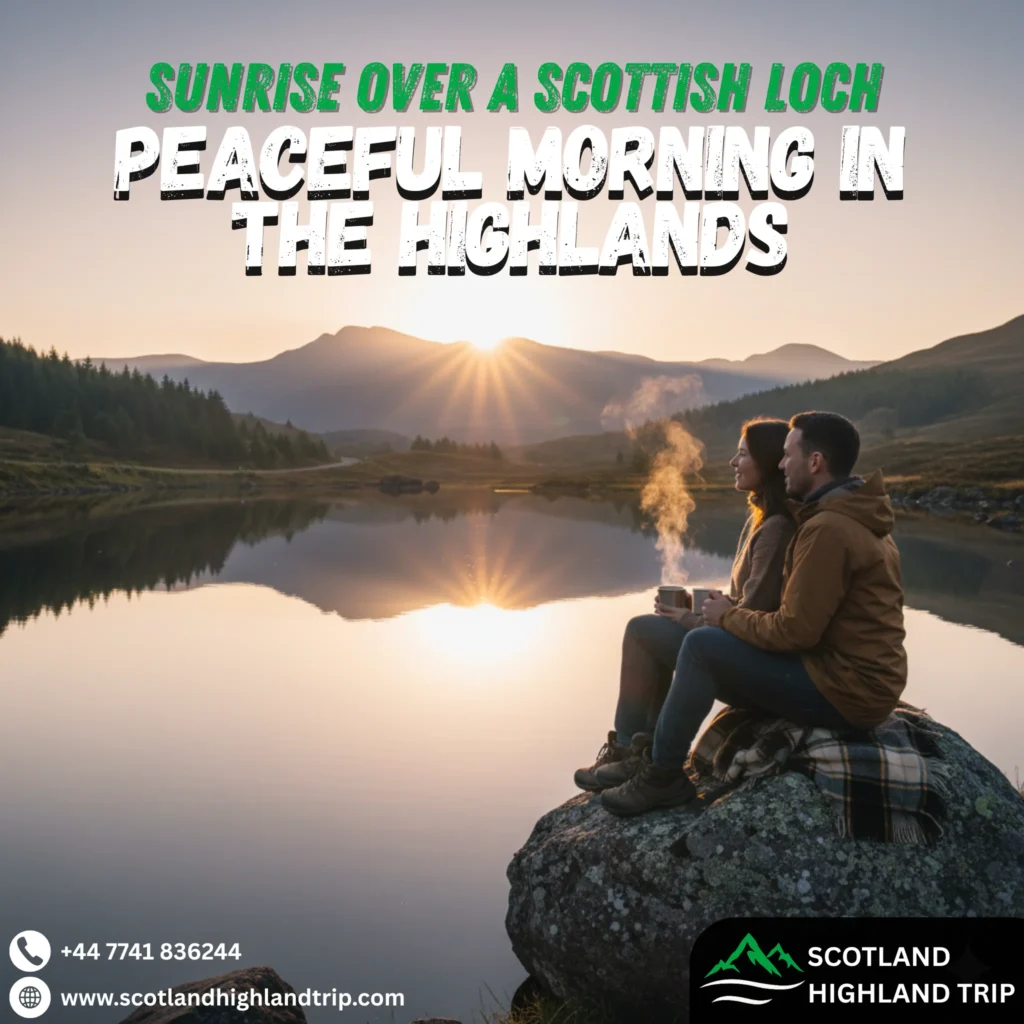
Watching the sunrise requires intention. You have to set an early alarm, make a thermos of tea and hike in the dark but the payoff is huge. As travel writer Zara Aitken notes in her guide to the Old Man of Storr, getting up before dawn allows you to experience landscapes without crowds and leaves you feeling like you’re seizing the day by the horns. The stillness of dawn or the calm of an evening by the water offers a natural mindfulness practice. For couples, sharing a sunset or sunrise becomes a treasured memory and, for many, the perfect time to propose.
Plan your Trip Timing
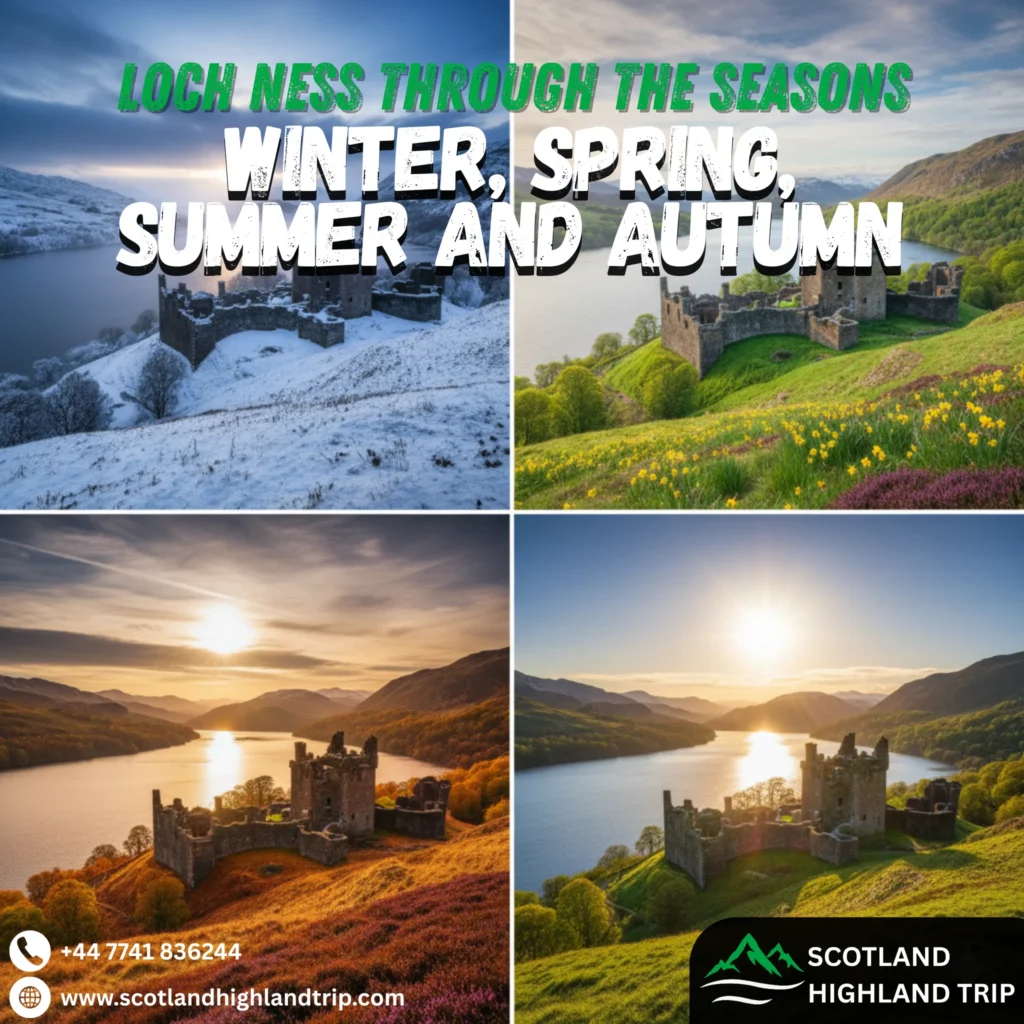
The Highlands span a large latitude, so sunrise and sunset times vary dramatically across the year. In the depths of winter the sun may rise after 8 am and set around 3 pm, whereas in mid‑summer daylight can linger until after 10 pm. Always check local times for the exact day of your visit. In general:
- Winter (November-February): Late sunrises (around 8 – 9 am) and early sunsets (3 – 4 pm) make it easy to catch both. Days are short and temperatures cold, so dress warmly and carry a hot drink.
- Spring/Autumn (March-May and September-October): A sweet spot for travellers. Sunrise around 6 – 7 am and sunset around 7 – 8 pm mean you don’t need to rise too early or stay out too late.
- Summer (June-August): Very early sunrises (4 – 5 am) and late sunsets (10 – 11 pm). Expect midges near water at dawn and dusk; wear repellent and long sleeves.
Essential gear and safety
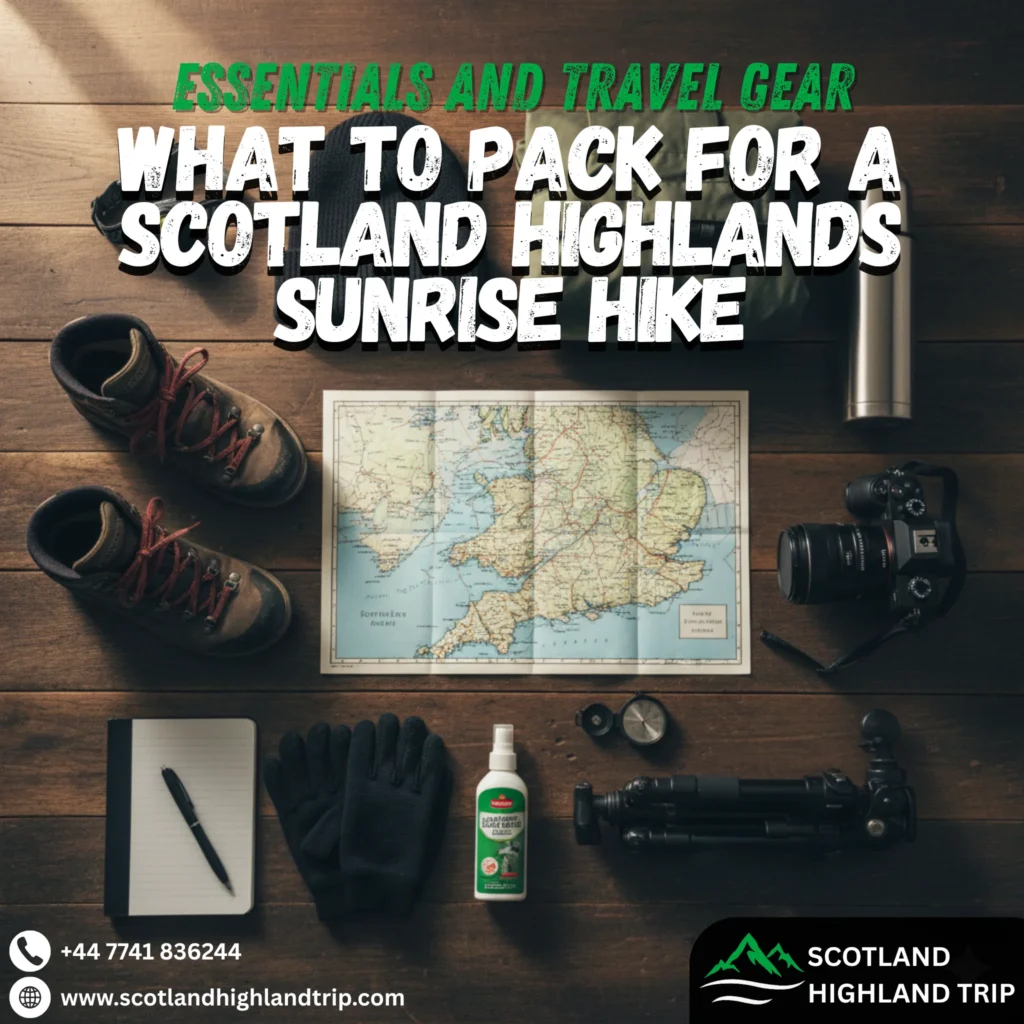
To enjoy your dawn or dusk adventure comfortably:
- Headtorch and spare batteries: Trails can be dark at dawn; hikers on the Old Man of Storr emphasise carrying a headtorch to navigate the gravel path.
- Warm and waterproof clothing: Weather in the Highlands is unpredictable; bring layers and waterproofs even in summer.
- Sturdy footwear: Many paths are rocky and uneven.
- Camera and tripod: Sunsets paint skies with oranges, pinks and purples. A tripod helps capture long exposures.
- Hot drink and snacks: Sunrises can be chilly; a thermos keeps you warm.
- Leave no trace: Respect the Scottish Outdoor Access Code; pack out all litter and stick to paths.
Before venturing out, always check the weather forecast and tide times (for coastal locations) and tell someone your plans. If you’re photographing a sunset, remember to look west and consider how the angle of the sun changes throughout the year.
Best Sunrise Spots in the Scottish Highlands
The Highlands cover a vast area that includes mainland mountains and the archipelagos of Skye, the Outer Hebrides and Orkney. Below are our favourite sunrise spots, drawn from local recommendations and personal experience. We’ve included hiking tips, romantic touches and accessibility notes to help you plan your visit.
1. Old Man of Storr, Isle of Skye
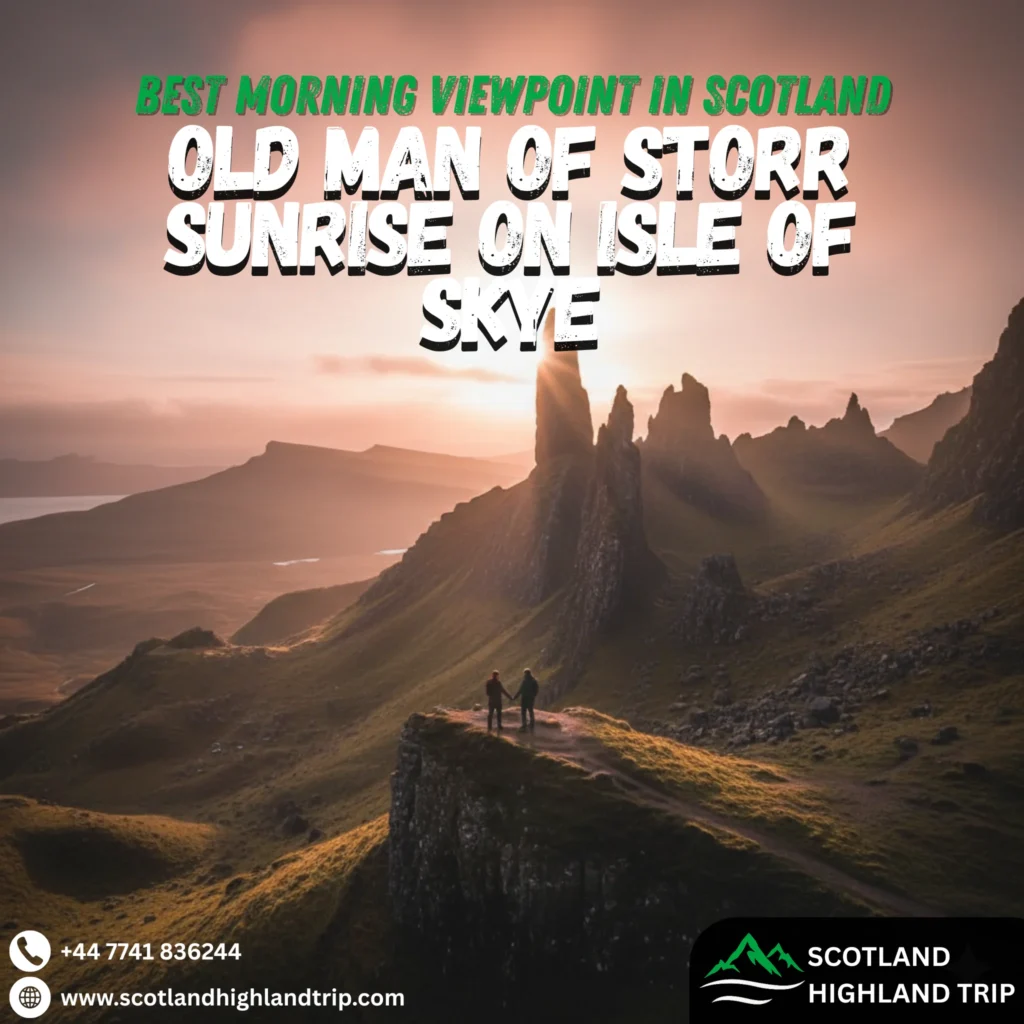
The Old Man of Storr on Skye’s Trotternish Ridge is one of Scotland’s most photographed landmarks. Travel writer Zara Aitken calls it the island’s best sunrise spot. It’s popular for good reason: the jagged pinnacle of the Old Man frames the rising sun and overlooks a patchwork of lochs and distant mountains.
How to visit:
- Getting there: The car park is 15 minutes north of Portree on the A855. There’s a dedicated lot with a small fee; arrive at least an hour before sunrise to secure a space.
- The hike: A steep but well‑defined 2.4‑mile return trail leads to the rock formation. Carry a headtorch because the initial climb happens in darkness.
- Experience: From the pinnacles, watch coral‑coloured clouds ignite above the lochs and mountains. We once sat on a boulder here, hot coffee in hand, as the sky turned shades of coral and orange. It felt like witnessing a private performance.
Romantic tip: Find a quiet spot on the hillside as the dawn chorus begins. Many proposals happen here because the setting is so dramatic.
2. Quiraing, Isle of Skye
Further along the Trotternish peninsula, the Quiraing offers an extraordinary landscape of landslips and spires. Photographer Simon Kitchin notes that the light here can be simply incredible around sunrise. A short climb from the car park leads to multiple viewpoints; higher ground rewards you with expansive vistas.
Personal note: Arriving before dawn, we watched swirling mist drift through bizarre rock formations while rays of gold lit the distant sea. It’s quieter than the Old Man of Storr and perfect for photographers seeking unique compositions.
3. Sligachan Bridge, Isle of Skye

Built in 1818 by engineer Thomas Telford, Sligachan Bridge is framed by the Red and Black Cuillin mountains. It as a stunning place for sunrise or sunset photos The bridge spans the River Sligachan, providing reflections of the peaks and dramatic skies.
How to experience it: Park near the Sligachan Hotel and walk down to the river. In the golden hours, the mountains catch warm light while the river glimmers. Legend says that dipping your face in the water beneath the bridge grants eternal beauty, a fun ritual for couples!
4. Elgol, Isle of Skye
Elgol is a small fishing hamlet on the south coast of Isle of Skye with sweeping views of the Black Cuillin mountains. Kitchin recommends visiting during stormy weather, when dramatic light adds a foreboding feel to photographs. Sunrise here lights up the jagged peaks, while waves crash against weather‑worn rocks.
Personal note: We visited on a calm morning and found solitude on the pebble beach. The pink light touched the Cuillin summits while fishing boats bobbed gently, perfect for quiet contemplation.
5. Eilean Donan Castle, Kyle of Lochalsh
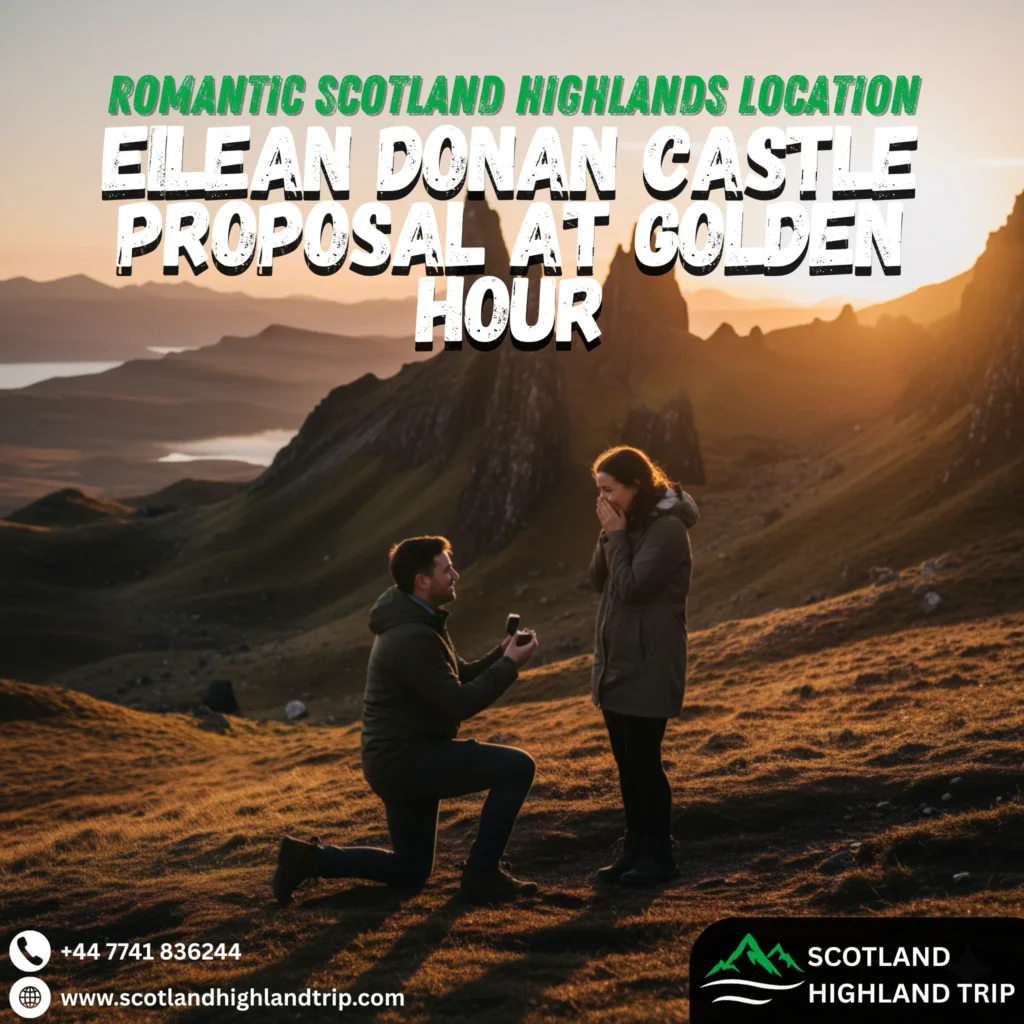
Sitting at the meeting of three sea lochs, Eilean Donan is often called Scotland’s most photographed castle. Photographers are best timing their visit for sunrise or sunset At dawn, the medieval fortress seems to rise from the mist, with mountainous backdrops and calm reflections.
Travel tips:
- Check tide times; a higher tide creates a perfect mirror image in Loch Duich
- Arrive early to set up your tripod before bus tours arrive.
- The castle is illuminated at night, so a predawn visit may reveal twinkling lights as day breaks.
6. Buachaille Etive Mòr, Glencoe
The pyramid‑shaped Buachaille Etive Mòr guards the entrance to Glencoe and is one of Scotland’s most photographed mountains. The classic viewpoint from the River Coupall waterfall is ideal for an autumn sunrise; Viewpoint is limited and you should arrive well before the sun rises In the golden light, the peak glows orange and the waterfall sparkles.
Experience: One icy November morning we reached the falls in darkness. As dawn broke, frost glistened on the rocks and the mountain turned copper. Photographers lined up with tripods, but there was still enough space to find a unique angle.
7. Corpach Shipwreck, Fort William
On the shores of Loch Linnhe near Fort William lies the abandoned Corpach shipwreck. Kitchin calls it a great place to photograph Ben Nevis with the shipwreck and loch providing interest. A sunrise or moody dawn adds drama; low clouds often cling to the mountain.
Tip: Park near the Caledonian Canal and walk along the foreshore. The shipwreck is easy to find and, when photographed with misty mountains, offers a unique juxtaposition of nature and human history.
8. Glenfinnan Viaduct and Jacobite Steam Train
Made famous by the Harry Potter films, the Glenfinnan Viaduct carries the Jacobite steam train over a sweeping valley. Train is most photogenic when pulling carriages from Fort William to Mallaig A sunrise visit allows you to watch first light hit the arches and perhaps catch the train’s morning run.
Timing: Check the train timetable and arrive early to claim a spot on the hillside. From above the viaduct, you can watch the steam billow into the dawn sky, a magical sight.
9. Suilven from Elphin Bothy, Assynt
Suilven is one of the most iconic mountains in Scotland. Kitchin recommends photographing it from Elphin Bothy, noting that sunrise during autumn is particularly rewarding because warm tones and autumn colours create a striking image The area is remote and weather can be moody, which adds atmosphere.
Experience: We reached Elphin just as the sky turned rose‑gold. The distinctive whale‑back shape of Suilven emerged from a sea of mist, and the boggy foreground glowed red with heather. It felt like standing in a painting.
10. Torridon Hills
The Torridon Hills in Wester Ross offer some of the most awe‑inspiring peaks in Scotland. Waking up in this dramatic and desolate setting is thrilling. Mountains such as Liathach, Beinn Alligin and Beinn Eighe tower above sea lochs and ancient pine forests.
Personal note: After a night in a bothy, we climbed partway up Liathach in darkness. The reward was a sunrise that cast shafts of light across lochs Torridon and Shieldaig, highlighting patches of forest and scree. Few places feel as wild.
11. Glenshiel and the Five Sisters of Kintail
The glen of Glenshiel offers classic Highland scenery with lochs, glens and mountains. Visiting early to create lasting memories accompanied by the dawn chorus. The Five Sisters of Kintail ridge provides a dramatic backdrop for sunrise, particularly when low cloud hangs in the valleys.
12. Moray Speyside
This region offers beautiful rural landscapes and is known for its whisky. Bow Fiddle Rock, a sea arch near Portknockie, is aligned towards the rising sun at certain times of year. Arrive at low tide to walk onto the beach for the best composition.
13. Inverness and the River Ness
Inverness combines cosmopolitan living with the beauty of the Highlands. Sunrise here will not disappoint. Walk along the River Ness or visit nearby Loch Ness to watch dawn light reflect off the water. After sunrise, explore cafés along the river.
14. South Uist & Isle of Lewis (Outer Hebrides)
Although not on the mainland, these islands are part of the Highlands region and deserve a mention. South Uist features long stretches of barren coastline and mountains, while the Isle of Lewis boasts wild mountains, white beaches and rugged coastlines. Sunrises here can be spectacular, especially when the tide is high and the beach empties of people.
Tip: For a romantic experience, walk hand‑in‑hand along the beach as the first light turns the sand pink and the Atlantic sparkles.
Best Sunset Spots in the Scottish Highlands
As day fades, the west‑facing coasts and lochs of the Highlands put on an equally impressive display. Below are the sunset locations we love most.
1. Loch Lomond at Balmaha
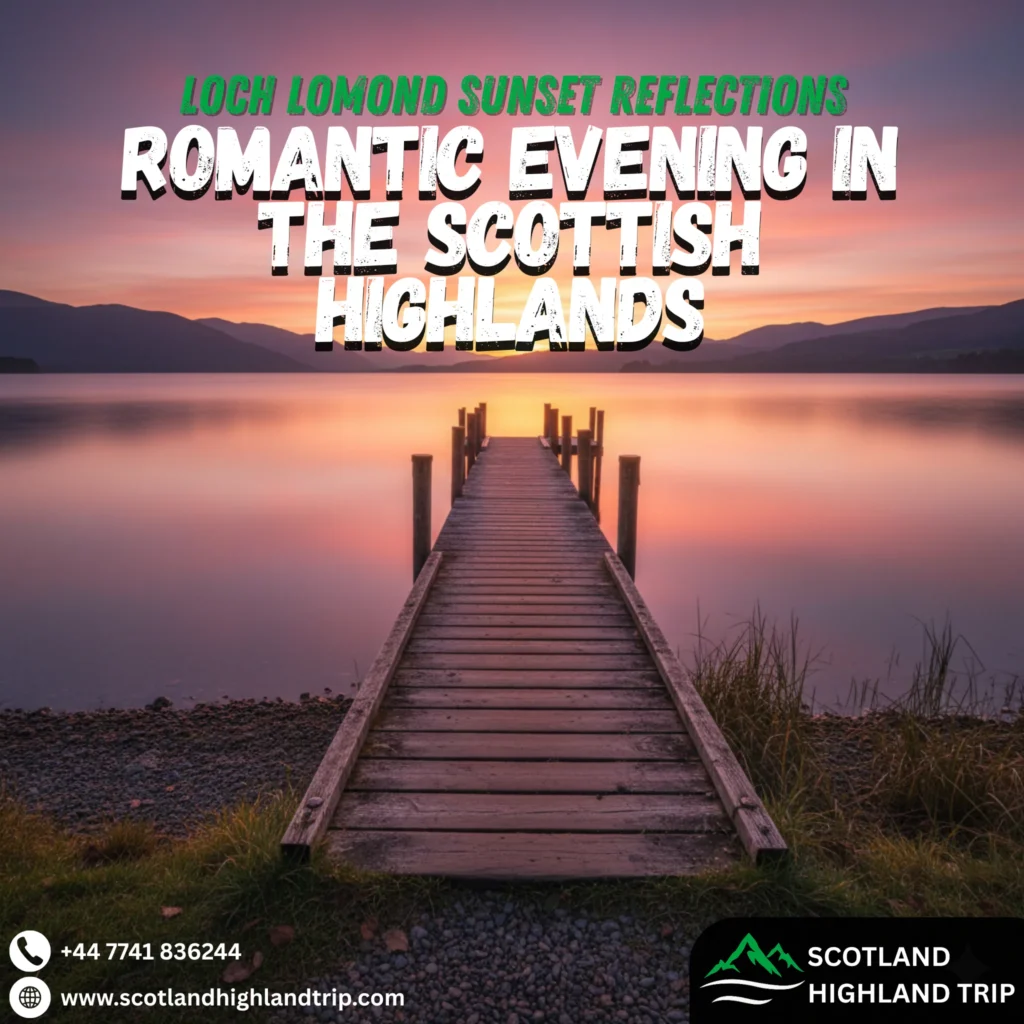
Watching the sunset over Loch Lomond feels like something from a fairy tale. The loch reflecting a dazzling palette of oranges, pinks and purples. Balmaha on the eastern shore has picnic tables and a jetty where you can relax with a hot drink as hills and distant mountains silhouette against the colourful sky.
2. Assynt & the Wailing Widow Waterfall

Assynt’s mountains, Suilven, Canisp and Quinag provide a perfect backdrop for sunset. Watching from the Wailing Widow Waterfall and imagining golden light filtering through rugged Highland landscape and cascading waters. The combination of mountains, waterfall and glowing sky is unforgettable.
3. Findhorn Beach, Moray

Findhorn Beach is a wide crescent of white sand, grassy dunes, boulders and pebbles. Sunset here features silhouettes of distant boats and seabirds gliding over the water. Bring a blanket, sit on the dunes and watch fiery colours reflect on the sea.
4. Loch Tay, Perthshire
Although Perthshire is south of the Highlands proper, Loch Tay’s deep waters and the Ben Lawers mountain range make for incredible sunsets. VisitScotland recommends watching from Dalerb, where picnic tables allow you to relax as colours reflect on the loch.
5. Loch Fyne, Argyll & the Isles
Loch Fyne is famous for its oysters and herring but it’s also a fantastic place to watch the sun go down. The Cowal peninsula forms a mountainous backdrop; the surface of the loch reflects the colours of the setting sun, creating a mirror‑like effect. As light fades, you’ll still hear the quiet hum of fishing boats.
6. Castle Point Beach, Dumfries & Galloway
A little south of the Highlands, Castle Point Beach offers rugged cliffs and abundant plant life. The gentle sound of waves lapping against the shore creates a peaceful ambience, and a footpath leads to the village of Kippford. Though not strictly in the Highlands, this location is perfect for travellers extending their road trip down the west coast.
7. Burra, Shetland
Shetland’s island of Burra is a lush, green place where you can walk along Minn Beach, a curved sand bar connecting two islands. Curved stretch of sand creates a picturesque setting for watching the sun dip below the horizon. Puffins nest nearby, adding charm.
8. St Abbs Head, Scottish Borders
St Abbs is a coastal paradise of cliffs, gullies and offshore stacks. The soft golden light of late afternoon melts the colours of the cliffs and sky together. Bring binoculars, seabirds soar along the cliffs and stay for the final rays.
9. Calton Hill, Edinburgh
For an urban sunset, climb Calton Hill in Edinburgh. From the summit you’ll see Edinburgh Castle, Arthur’s Seat and the National Monument framed by a golden sky. It’s outside the Highlands but ideal if you fly into Edinburgh before heading north.
10. Arbroath Harbour, Angus
In Arbroath, the golden light glimmers on calm waters where fishing boats float gently in the harbour. Long sandy beaches and red sandstone cliffs surround the town, creating a dramatic evening scene.
Tips for Capturing the Perfect Photo
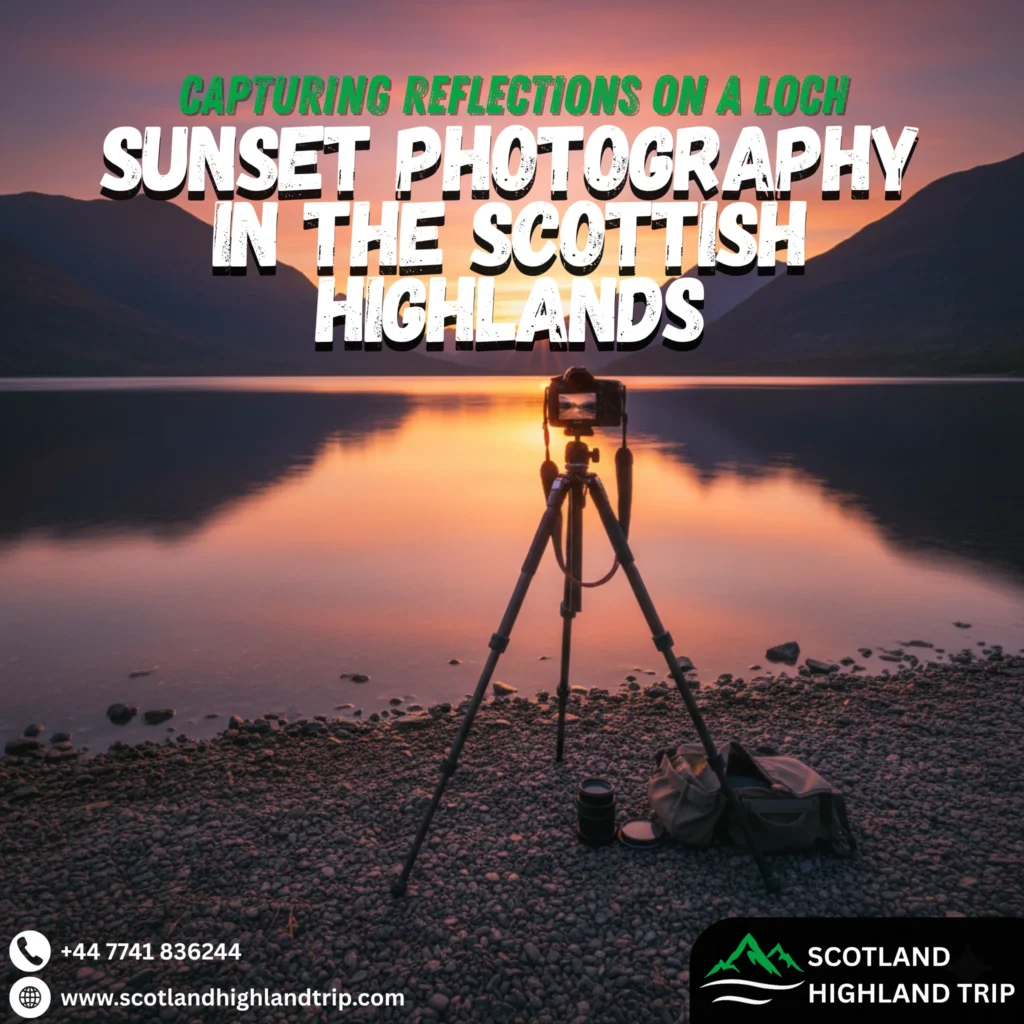
Useful advice for shooting sunsets:
- Know the time and direction: Use apps like PhotoPills to check sunrise and sunset times and the sun’s position. Remember that in northern Scotland the sun sets as late as 10 pm in summer and as early as 3:40 pm in winter.
- Check the weather: Clear or partly cloudy skies produce the best colours. Too many clouds can obscure the show, while no clouds may make the sky less interesting.
- Scout your location: Arrive early to find foreground elements, rocks, trees, water that add depth.
- Use a tripod and remote: Long exposures blur water and capture vibrant colours. A remote or timer prevents camera shake.
- Stay after the sun dips: Often the most intense colours appear 10–20 minutes after sunset.
- Dress warmly and pack a torch: Once the sun sets it will be dark; carry a torch and warm clothing.
- Never look directly at the sun. Protect your eyes by using live view or an electronic viewfinder.
Frequently Asked Questions
When is the best time of year to visit the Highlands for sunrise and sunset?
Autumn (September to October) and spring (April to May) offer the best balance of reasonable sunrise/sunset times, good weather and smaller crowds. Autumn also brings rich colours that look spectacular in dawn light Summer has very long days, which might mean waking up at 3 am for sunrise, while winter offers easier times but limited daylight.
Do I need a car to reach these spots?
A car provides flexibility, especially for remote areas like Assynt, Torridon and the Outer Hebrides. Some spots, such as the Old Man of Storr and Quiraing, can be reached by bus (e.g., the 57a from Portree). For city locations like Calton Hill, public transport is sufficient. Many travellers hire motorhomes to tour the Highlands, which also allows you to stay near sunrise locations.
Are these spots suitable for proposals or special occasions?
Absolutely! Romantic settings include the Old Man of Storr, Quiraing, Eilean Donan Castle and Loch Lomond. Remember to check the weather and arrive early for privacy. If you’re planning a surprise proposal, consider hiring a local photographer to capture the moment.
Are there any cultural or environmental considerations?
Please follow the Scottish Outdoor Access Code by respecting livestock, closing gates and taking all litter home. In some areas, such as the Cuillin, Gaelic folklore imbues the landscape with spiritual significance. Be mindful of local communities and avoid playing music or drones during quiet dawn hours.
What should I pack for a sunrise/sunset hike?
In addition to the gear listed earlier, bring:
- Midge repellent in summer.
- Emergency blanket and first aid kit for safety.
- Binoculars to watch wildlife.
- Snacks and water (and perhaps champagne for celebrations!).
Experience the Highlands With Us
If reading this guide makes you yearn for misty mountains and glowing skies, we would love to help make your dream trip a reality. Our team specialises in crafting bespoke Highland itineraries and romantic escapes. Whether you want a sunrise hike up the Old Man of Storr, a sunset cruise on Loch Lomond or a photography workshop in Glencoe, we can arrange it.
Ready to start planning? Get in touch via our contact page or subscribe to our newsletter for insider tips, seasonal guides and exclusive offers. Let’s chase those first and last rays of light together.

Emma is a solo traveler and freelance travel writer from New Zealand who spent three weeks exploring the Scottish Highlands. With a deep appreciation for history and landscapes, she booked a series of day tours and a private chauffeur journey with Scotland Highland Trip. From Loch Ness to the Cairngorms, she documented her experience through vivid blog posts and drone footage.

